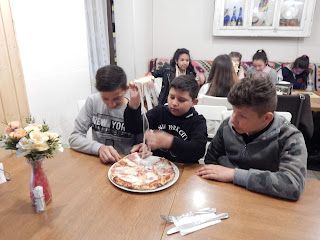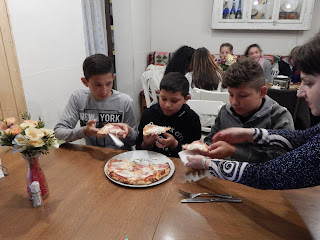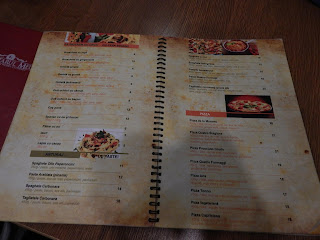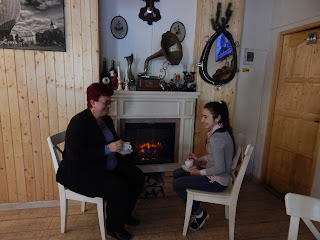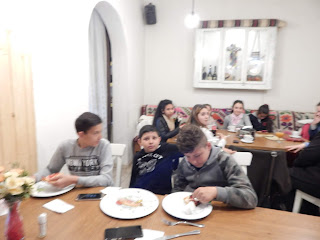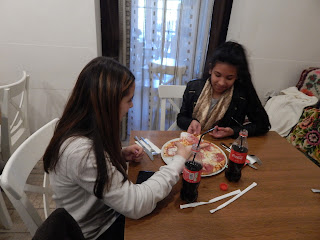Good Manners in ELT
By Nicoleta Onea,
teacher at Școala Gimnaziala „Vasile
Alecsandri” Baia Mare
No matter what we teach, every day is
a great occasion to educate children. The arrival of cold seasons presupposes the more frequent usage of the
handkerchief. The students learn very early that the place where we live must
be clean and the rubbish must be thrown into the waste-basket. Taking into
consideration such aspects like these we have been thinking of introducing good
manners in ELT.
In
the autumn of 2018, the first grade children were taught „Fall in the Forest”,
starting the lesson with a TPR activity.
Next, we introduced the autumnal characteristics through picture
exploitation and we used the flashcards
to make a connection between image, meaning and pronunciation through word
games and then we integrated the words in a dialogue.
Finally,
we had a poster done by the children in order to consolidate the new notions,
the children listened to a song while they were colouring the autumn on a page.
During the same lesson the children learned that some fruit and vegetables are
eaten with their skin but sometimes we have to peel the skin and throw it into
the waste-basket in order to enjoy playing in a clean classroom.
When
we taught the lesson „One Little, Two Little, Three Little Monsters” we
exploited the Halloween topic and we had the opportunity to teach the
preparatory grade students how important it is to respect elderly people.
First, the teacher asked the children how they were feeling and they had to
choose between the answers „I am happy”
or „I am sad” and next they associated the feelings with bright colours or dark
colours. Then, they sang a happy song and a sad song. (Pugliese, 2010, 35)
The
teacher put the Halloween characters in a balloon which was loosing air and the
children had to choose the survivors taking into consideration the qualities
and the flaws of the characters. The discussion showed that the students loved
and respected the elderly people and at
the same time they wanted to love and
protect the animals..
(
Harmer, 1991, 125)
When
the first grade students were taught the
lesson „The Story of the First Thanksgiving”, they learned that the most
beautiful way to show our gratitude is by saying „Here you are”, „Thank you”
and „You’re welcome”. The teacher
presented „The Story of the First Thanksgiving” through pictures and afterwards
the children sang the song „Hello, Mr. Turkey, how are you?”
The
children watched the film „The Story of the First Thanksgiving for Kids”
and each student realized a collage
individually. The pieces of the collage represented Squanto, the Indian, who
had taught the pilgrims how to survive.
To
sum up, the usage of the context of the lessons for teaching good manners is a
positive way of introducing important behavioural notions without criticizing
the students.
REFERENCE LIST
Harmer,
Jeremy. The Practice of English Language Teaching. London and New York:
Longman, 1991
Pugliese,
Chaz. Being Creative: The challenge of change in the classroom. Delta
Publishing,2010
Romanian version:
Bunele
maniere in contextul orelor de limba engleza
prof.
limba engleza Nicoleta, Scoala
Gimnaziala „Vasile Alecsandri” Baia Mare
Fiecare oră indiferent ce predăm este un prilej de a face educatie. Sosirea
anotimpurilor reci presupune folosirea frecventa a batistei. Elevii noștri invață
de mici că sala de clasă trebuie să fie curată si toate hârtiile sau resturile
neplăcute trebuie aruncate la gunoi. Luand
in considerare aceste aspecte, ne-am gandit sa introducem bunele maniere în cadrul orelor de limba engleză.
In toamna anului
2018,elevii din clasa I au inceput lectia „Fall in the Forest” cu o activitate
de tipul Total Physical Response. Apoi, profesorul a
familiarizat elevii cu caracteristicile anotimpului toamna prin descrierea unei imagini mari colorate cu animalele si
plantele din padure. Cu ajutorul
flashcardurilor profesorul a predat cuvintele noi în așa fel încât copiii să facă o conexiune între
imagine, înțeles, și pronunție prin jocuri de cuvinte, apoi a integrat lexicul într-un
dialog. Profesorul a folosit metoda posterului pentru ca să consolideze noțiunile
noi. Lecția s-a încheiat prin ascultarea cântecului și prin colorarea fișei cu
anotimpul toamna. În cadrul acestei lecții copiii au învățat că unele fructe si
legume se mănâncă cu coajă, iar cojile pe care le îndepărtăm atunci când mâncăm,
se aruncă la gunoi ,ca sa ne faca placere sa ne jucam intr-o sala de clasă curată.
Lecția „One Little, Two Little, Three Little
Monsters” care a valorificat
tematica Halloween, a oferit
oportunitatea de a învăța elevii clasei pregătitoare cât de important
este să respectăm persoanele în vârstă. Copiii au repetat cele două sentimente „I am happy” și „I am sad”
si au asociat aceste sentimente cu culori. Copiii au
asociat I am happy cu culori calde iar sentimentul tristeții l-au asociat cu culorile
reci. Apoi au cântat un cântecel vesel si unul trist. [i]
Profesorul a pus intr-un
balon care pierde aer toate personajele care au legatura cu tematica Halloween iar
elevii au ales supraviețuitorii în
funcție de calitățile și defectele personajelor. Dezbaterea
a scos la lumină faptul că elevii iubesc si respectă
persoanele în vârstă și în aceeași
măsură iubesc și doresc să ocrotească animalele. [ii]
În cadrul lecției „The
Story of the First Thanksgiving” elevii clasei I au învățat că cel mai frumos
mod de a ne exprima recunoștința față de cei care ne ajută este cu ajutorul cuvintelor „Poftim”, „Mulțumesc”, „Cu placere”.. Profesorul a prezentat oral în limba engleză povestea „Prima Zi a Recunoștinței” folosind
imagini apoi, lecția a continuat cu învățarea
unui cântecel „Buna, domnule curcan, ce mai faci?” Elevii au vizionat filmul pentru copii „The Story of The First Thanksgiving for Kids”
și au realizat individual un colaj care îl
infățișează pe indianul Squanto, cel care i-a învățat pe pelerini cum să supraviețuiască.
În concluzie, integrarea noțiunilor de bună creștere în
contextul orelor de limba engleză,
este o metodă pozitiva de a introduce notiuni despre comportamentul
elevilor deoarece folosim tematica
lecțiilor fără ca elevii să simtă
că sunt criticați.
BIBLIOGRAFIE
Harmer, Jeremy. The Practice of English Language Teaching.
London and New York: Longman, 1991
Pugliese,Chaz. Being Creative: The challenge of change in
the classroom.Delta Publishing,2010
[i] Pugliese,Chaz. Being Creative: The challenge of change in
the classroom.Delta Publishing,2010, p35
[ii] Harmer,
Jeremy. The Practice of English Language
Teaching. London and New York: Longman, 1991, p125





































